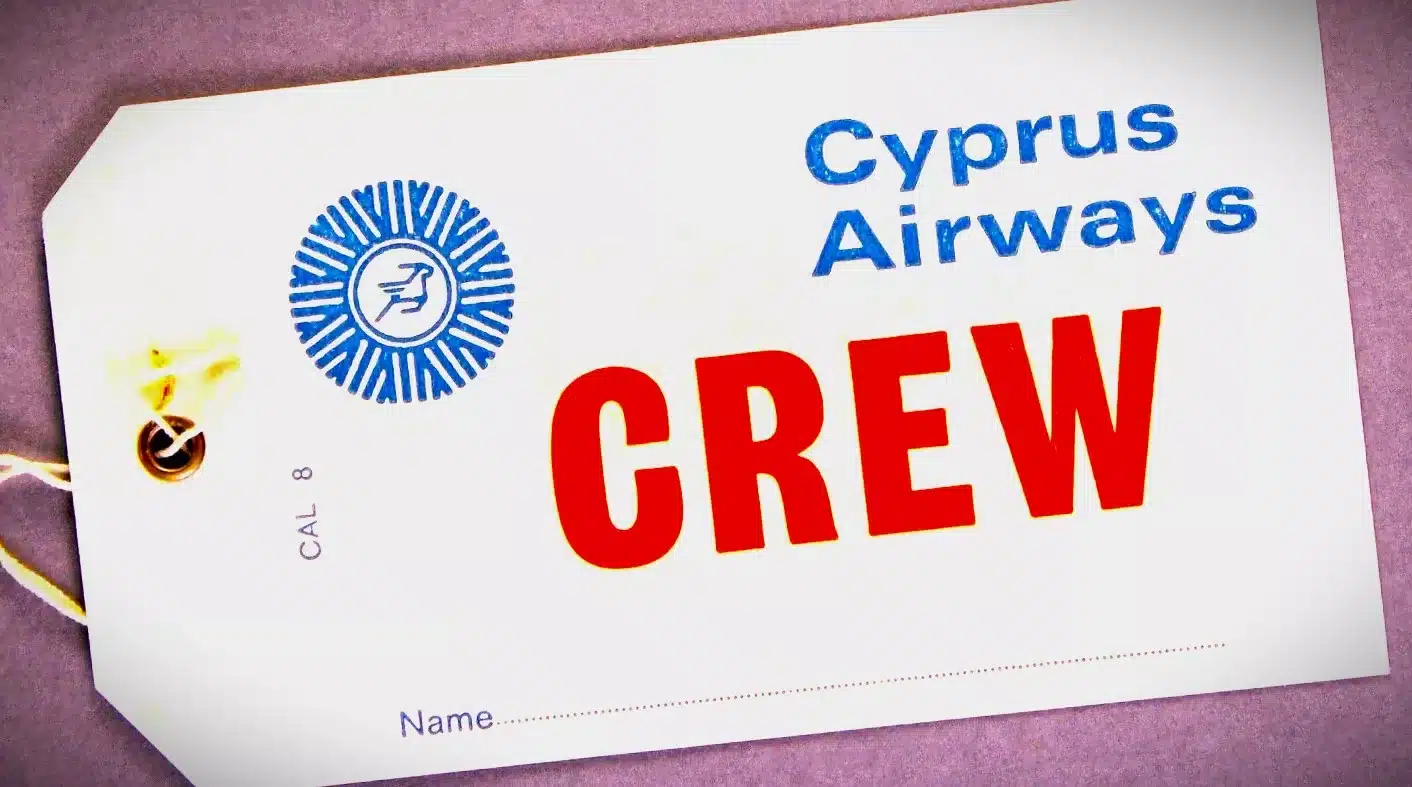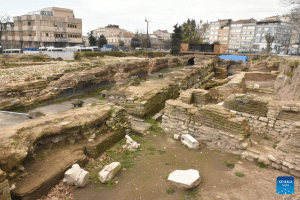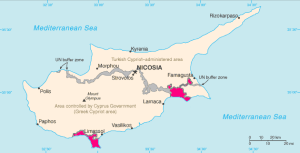Recently, I read and reread A Traveller’s Guide to Cyprus, the third edition published in 1971, by Hazel Thurston.
As is known, the island’s spotlight brightened after the troubles of the early 1960s and dimmed again in 1974. Though the unrest kept some holidaymakers away, the beaches and legendary hospitality lured others and by the late sixties, a boom in tourism led to infrastructure development.

For example, Thurston informs readers that Nicosia International Airport’s expansion plans included longer runways for the use of Boeing 747s. Back then, the terminal sat breathtakingly in the shadow of the Pentadaktylos mountains, boasting a modern departures lounge, equipped with duty-free shops and a restaurant.
It’s interesting to learn that during 1969, more than a dozen major airlines were flying into the airport, making it easier for pioneering tourists to enjoy ‘so called package holidays.’ Direct flights from London operated by B.E.A. and Cyprus Airways, also via Athens, provided regular daily services to and from England. In first class, it is said, glamorous stewardesses served hot dishes from extravagant displays on trolleys, carving beef bourguignon and serving drinks in crystal glasses.

Other daily connections included Athens, Beirut, and Tel Aviv. B.O.A.C.’s scheduled flights from East Africa to London landed at Nicosia twice weekly. And that’s not all. Europe’s main cities were served by the East German carrier Interflug, Cyprus Airways flew to Frankfurt, Malev to Budapest, Turkish Airlines direct to Istanbul, Aeroflot to Moscow, and Czechoslovak Airlines to Prague.
Regular services to the Middle East were operated by Royal Jordanian – stopping at both Amman and Benghazi; Turkish Airlines ran an Adana and Ankara service; and United Arab Airlines made the short hop to Cairo.
Though cruise ships docked at Famagusta, Larnaca and Limassol, there were no scheduled passenger sailings from the United Kingdom. However, if you wished and were a person of means, limited accommodation could be secured on cargo boats operated by Westcott and Laurence Lines between London and Famagusta, and Limassol, a voyage of approximately twelve days.

Alternatively, regular passenger services were operated from French, Italian, Yugoslavian, and Greek ports by the Adriatica Line, the Hellenic Mediterranean Lines, Typaldos Lines, Epirotiki Line, Jadrolinija and the Compagnie Française de Navigation Maritime and Zim Navigation, while the Black Seas Steamship Line called at ports between Odessa, Famagusta, and Alexandria.

Believe it or not, some tourists still chose to journey by train. However, even the most seasoned explorer might have found the experience exhausting. The fastest rail service to Athens – taking 56 hours for Piraeus as the point of embarkation for Cyprus – was from Liverpool Street connecting with the Akropolis Express at Ljubljana, Yugoslavia. This international train could also be boarded at Munich. Other connections could be made with the Hellas Express at Cologne, the Orient Express at Munich, the Istanbul Express at Stuttgart and the Orient Express direct from Paris.
The first half of the guide describes in equally meticulous detail options for dining, dancing, and accommodation. And for peace of mind medically, readers are informed climate of the island was healthy, as demonstrated by a low death-rate, low infant mortality and the absence of quarantinable disease such as cholera, plague, typhus and yellow fever.

Furthermore, the mineral springs of the Troodos range were ‘recommended for the treatment of skin and rheumatic diseases.’ If anything major were to arise, readers were assured the island operated 22 hospitals, in addition to others owned by the mining companies. ‘Tap water may be drunk in all the main towns, though in Famagusta it is apt to be heavily chlorinated’.
By Nathan Morley












